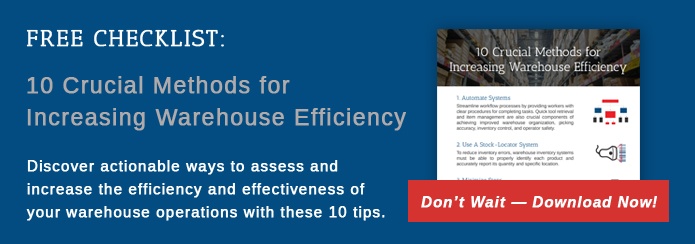 As your warehouse business takes off, it is important to make sure you have the proper systems and equipment in place to handle increasing volume and customer demands over time. With an eye on accuracy, efficiency, and productivity, there are now many helpful tools and equipment types that can enhance your business and simplify the workload ahead. Here are some of the most important features you should consider to stay competitive with other warehouses in the industry:
As your warehouse business takes off, it is important to make sure you have the proper systems and equipment in place to handle increasing volume and customer demands over time. With an eye on accuracy, efficiency, and productivity, there are now many helpful tools and equipment types that can enhance your business and simplify the workload ahead. Here are some of the most important features you should consider to stay competitive with other warehouses in the industry:
Warehouse Management Systems
An effective warehouse management system is the glue that holds all of your operations together. WMS software is used to coordinate ordering, stocking, picking, and shipping from start to finish. All members of your team will benefit from the use of warehouse management systems that provide concise directions for how, when, and where to place or pull items from. By removing any doubt about item locations, inventory control will improve, and there will be far less room for accuracy errors at each interaction with any product. A full-scale warehouse management system will include not just software, but also efficient computers and hand scanners for use on the floor.
Storage Bins
It may seem obvious, but improper and inefficient storage bin practices can be a huge burden to any warehouse company. Oftentimes small warehouses purchase the largest size bins available and fail to make adequate arrangements for small products that are placed together. This results in too much wasted space or a jumble of tiny products that are difficult to sort through in a single bin. By using bins of many different sizes that can be stacked or stored side by side with individualized barcode locations, stocking and picking will be more accurate and detailed, cutting down on time spent trying to locate items.
Carousels and Vertical Lifts
Carousels and vertical lifts are designed to minimize foot traffic within a warehouse while maximizing the amount of space that can be used. Even with rolling or sliding ladder systems, there is usually a limit to the actual height of any shelf in your warehouse. Plus, team members who have to frequently climb ladders or use forklifts to access products above their heads are less productive than they could be.
A vertical lift will replace traditional shelving by allowing products to rotate upwards and out of the way when not in use, making it possible for a picker to stand in one place and access twice as much product. A well-implemented warehouse management system will communicate to the vertical lifts which items and locations need to brought down to the bottom for putaway and picking purposes. Carousels offer the same type of space enhancement by providing a top and bottom rack for items to move horizontally around your warehouse while pickers stand in one place and pull items that come directly to them.
Pallet Racking
For large items and excess items that are stored in pallets, a pallet racking system provides not just higher productivity, but also enhanced safety features. This allows pallets to stack higher without worry that they will become unbalanced or damaged due to weight.
The right warehouse management systems will bring all of the mechanical and physical elements of your warehouse together into one easy-to-follow process. The end result will be that any employee can do more work in less time with less actual labor. From pallet racks to individual bins, inventory will always be in the right place at the right time to be pulled for customer orders.



